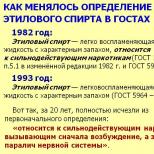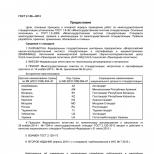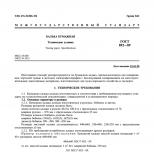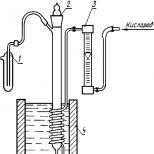How the largest ice rink in the world works. Ice rink business plan: necessary equipment and documents. How much does it cost to build an indoor ice rink What is synthetic ice made of?
Surely, each of you at least once attended an event on artificial ice - be it a hockey match, figure skating competition or just group skating.
Here I would like to tell you about reverse side receiving artificial ice, for example, a small ice complex.
As a rule, we do not go beyond the rental of skating rinks and the ice itself. I invite you to visit the heart of the ice rink - the room where the refrigeration equipment is located. Usually no one thinks about how a stable artificial ice cover is obtained and due to which it is maintained even at positive ambient temperatures.
General information:
This ice rink is located in the city of Aleksandrovsk Perm Territory... In recent years, several similar skating rinks have been built and are already in operation in the region in small district towns and villages ..
Talking to people - a small town was waiting for the opening of the ice rink with great impatience
No ice at all - an artificial ice rink is a smooth concrete surface. But inside it is a whole layer cake - pipes are laid in concrete layers where a liquid coolant flows.
As a rule, in Russia, a 40% aqueous solution of ethylene glycol (hereinafter simply glycol) is used as a coolant for ice fields.
Almost any motorist knows what it is - in cars, glycol solutions are known as antifreeze.
Under it, more layers of heat and vapor insulation are laid, and then another concrete layer with pipes for heating the soil from freezing. These layers are needed so that the soil under the ice field does not freeze and swell. If this had not happened, we would have got permafrost under the ice layer - with all the ensuing consequences: swelling and uplift of the soil.
The pipelines in the field itself are made of polyethylene pipes. The diameter of the tubes is only 25 mm. Collectors are laid out along the long edges of the field and these pipes are scattered between them.
Glycol with a temperature of -12 degrees C is supplied to the pipe system of the ice field, at the exit from the field its temperature should be - 9 degrees C.
Freon R404a was used as a refrigerant. Cooling agent for ice field and ground heating 40% ethylene glycol water solution.
Refrigeration center (room where refrigeration equipment is located):
The heart of any ice rink is often called by different names: the refrigeration center, the room of the refrigeration unit, etc., it all depends on the imagination of the designer or architect). Almost all the main equipment of the refrigeration system is located there.
For the installation of glycol pipes, steel pipes, for freon - copper.
Photo - General view of the refrigeration center

In the foreground are the pumps: field cooling systems (main and standby) - they are recognizable by their black insulated pipelines, a soil heating pump and a small pump for replenishing / filling the system.
A total of 4 pieces.
The pumps provide circulation of the coolant (coolant) through the pipeline systems and through the tubes of the ice field.
On the right is the refrigeration machine itself - more about it below.
It can be seen that the pipelines and fittings of a 40% aqueous solution of ethylene glycol are made in foam rubber insulation. This is done in order to avoid condensation from the air on the cold surface of the pipes.
Photo - Pumps of the main contour of the ice field. In the background is the control panel for all pumps.

Photo - General view of the refrigeration machine

The refrigerating machine itself: in it, the glycol is directly cooled in a shell-and-tube heat exchanger (at the bottom of the machine itself) - it acts as an evaporator, where, due to the boiling of freon, heat is removed from the glycol circulating in the field. The movement of gaseous freon through the system is carried out by two screw compressors (green in the background).
In a shell-and-tube heat exchanger, freon boils - during boiling, heat is taken from the glycol and cooled. Freon, on the other hand, turns from a liquid state into a gas and is pumped into condensers by compressors.
The photographs show thermometers - they are installed to visually monitor the temperatures of liquids at the inlets / outlets of heat exchangers.
Also, the chiller is used to maintain the temperature inside
The red and blue piping suitable for the plate heat exchanger are the piping of the ground heating system, which also uses a 40% aqueous solution of ethylene glycol.
A plate heat exchanger in this case is a recuperator: for the glycol of the soil heating system, the heat of hot gaseous freon is used - at discharge it has a temperature of about 90 degrees C.
A control panel is installed on the right side of the frame - all temperature parameters of the unit are set on it.
Photo - Condenser area

To remove heat from the ice field in environment capacitors are used. In this case, air cooling. Freon condenses in them - it passes from a gaseous state to a liquid. After the condensers, it is already in a liquid state again enters the shell-and-tube evaporator and the cycle is repeated again.
Photo- Condenser close up

The condenser is a copper heat exchanger with fans (to forcibly increase the heat exchange efficiency). Here, the fans are covered with snow. the system did not start for a long time.
Photo - Skating

If you have any questions, I am ready to answer them in the comments.
Designed for indoor use with a stable temperature and a perfectly flat, solid base. Artificial ice rink from plastic ice model "Inside" is great for use in the training process of hockey players and figure skaters at home. The cost of this model is comparable to the cost of domestic counterparts made from low-quality raw materials - low-pressure polyethylene (HDPE), however, the quality of sliding is several times higher. Here you can buy artificial ice for hockey from German raw materials - high molecular weight polyethylene.
- Dimensions of one panel - 1966x996x10mm.
- Does not require the use of any lubricating emulsions.
- Has a puzzle-type fastening system - "dovetail".
- Service life of "Inside" artificial ice - up to 10 years.
Synthetic ice Slide Ice "Outside"
Suitable for both indoor and outdoor use. This model does not require a perfectly flat base for the roller, thanks to the unique for the Russian market system of panel fastening - "thorn-groove-pin". Such a system for connecting sheets eliminates the possibility of gaps between them. Also, the "Outside" model has UV protection from the sun, which prevents micro cracks and discoloration of the material. You can buy artificial ice from us inexpensively, because the price of "Outside" synthetic ice is more than two times lower than the cost of foreign analogues of absolutely the same quality.
- Dimensions of one panel - 1990x990x12.7mm.
- Does not require the use of any lubricating emulsions.
- Has a panel coupling system - "tongue-groove-pin".
- Service life of plastic ice model "Outside" - up to 15 years.

Decorative board "RIO"
Decorative board "RIO". The skating rink guard of the "RIO" model is intended for indoor or outdoor use. The board is made of a one-piece metal frame, consisting of three horizontal and three vertical profiles and anti-vandal monolithic polycarbonate, which does not break or crack even after a strong impact on it. The main advantage of such a board is that it does not need to be fixed to the base of the roller, which makes it versatile in use.
- You can choose any color of the frame and polycarbonate.
- Service life - unlimited.

Decorative board "Magnet"
The fencing of the "Magnet" skating rink is also suitable for indoor or outdoor installation. The product is assembled from a solid metal frame, consisting of two vertical, three horizontal profiles and two jibs, providing reliable, rigid stability. The inner lining is made of injection-molded anti-vandal 4mm polycarbonate. The fence does not require rigid fixation to the base, which allows it to be used without harming the floor covering.
- Dimensions of one section - 2000x1000mm.
- You can choose the frame and polycarbonate of any color.
- Has no restrictions on the service life.

In addition to the production of basic goods, our company is engaged in the supply of related additional equipment for the full organization of the ice rink. We can completely install the ice rink and provide it with everything you need "from A to Z", including: a set of skates different sizes, blade sharpener, cleaning machine polymer coating, skate counter, storage cabinets, shoe changing shops, rubber mats and much more.
- A set of men's, women's and children's skates - 50 pairs.
- Left-luggage offices - from 8 cells.
- Ice scrubber.

For those who are considering the possibility of installing a temporary ice rink, we offer the service of renting an ice rink made of plastic ice. Such a service is perfect for organizing mass skating during the celebration of a New Year's corporate party, a children's Christmas tree, a show with figure skaters or, for example, for opening a commercial ice rink in a shopping and entertainment center, city park or other public place.
- We will fully organize a skating rink with all the necessary equipment.
- We offer new or little-used ice in perfect condition.
- We have the most low price on the market thanks to our system of discounts.
Ice skating is popular! How was it made all-season? What is artificial ice? And what are the secrets of ordinary ice? It turns out that making a good skating rink is a whole science!
Many have observed this picture: during the breaks of hockey matches or figure skating competitions, unusual cars leave the arena. Skating sessions on city grounds are also interrupted for the harvesters to leave. These are resurfacers - from the English surface - the surface, they clean and level it. Among themselves, professionals call this procedure "treatment".
The specialists who monitor the condition of the ice rinks are called ice makers. This is not taught anywhere specifically. Pavel Zhukov, the project manager of mobile ice rinks, for example, played hockey as a child, then he trained the team, and each time he checked the quality of the surface himself. So the hockey player turned into an ice brewer.
One of the most respected ice makers in the world is Grigory Yakovlev, an ice technology expert at the Moscow Megasport arena. He developed his own technology for obtaining a surface for high-speed skiing. And he applied it at three of the five Olympic skating rinks in Sochi. The specialist is sure that speed skating records at those games were set, among other things, thanks to quality ice at the arena in Adler.
In general, the first ice-filling harvester appeared in 1949 in the warm state of California. It was invented by the American Frank Zamboni. By that time, he and his brother had opened the largest ice rink in the United States, measuring 30 by 60 meters, which could hold up to 800 people. At first, the ice had to be leveled by 4 workers, who grinded it by hand for several hours. sandpaper and re-poured. The machines made it possible to do the same in just 10 minutes! Unsurprisingly, they became popular.
The harvester has a blade that can cut up to 8mm of the top layer of ice. Usually they remove much less - it all depends on the depth of the scratches and chips. Snow chips fall into a tank that can hold up to 1200 kg. The machine gradually dispenses hot water onto the cleaned ice surface. It is evenly distributed by a cloth called a “towel”. A high water temperature is needed so that the liquid does not freeze right away, but penetrates into cracks and depressions, forming a new - even one! - the top layer of ice. When everything is done, the harvester leaves the arena and dumps the snow shavings into a special melting pit.
Pipes with a cooling agent pass under the concrete base, which comes from refrigeration devices - chillers (from the English chill - to cool). Some models are so powerful that they are able to keep the roller in working order in the heat of +45 degrees! There are several layers of thermal insulation under the pipes so that the cold only goes up.
Interestingly, the ice made in this way, due to the slow cooling, turns out to be very homogeneous and completely transparent - which, oddly enough, is not very good. So that hockey players can better see the puck and the markings, it is painted white (with the help of additives). And on public skating rinks they do this so that the fallen objects are noticeable and no one gets injured. Sometimes, for the same purpose, they simply paint the base of the roller white. And then they slowly pour water, freezing by a millimeter. It takes about a week to achieve a layer of 4 centimeters.
The ice must be different for each sport. For hockey, for example, you need a hard one - the blades of the skates are very sharp and the players are fighting a tough fight. For a short track, another characteristic is important - smoothness. Speed depends on it. The skaters have their own requirements, they need ice of medium hardness due to the many jumps.
Ice makers from around the world have their secret ingredients to create the perfect gliding surface. For example, in Moscow at VDNKh there is the largest skating rink in Europe, its area is 20,000 square meters, and up to 27,000 people come here a day. The huge surface actually consists of 9 parts, which were poured in turn.
The main problem of recent years for open skating rinks in Moscow is too warm weather. And often, in order not to cancel training, athletes use artificial ice. Here, a 10-year-old hockey player Masha from the Moscow Region is practicing shots with a puck on such a surface.
In fact, it is plastic. How is the sliding effect achieved? On the regular ice A thin layer of water forms under the blade of the ridge due to pressure. Here, the manufacturer recommends using an emulsion, and also wearing special skates that look more like rollers.
The plus is that you can skate on such ice even in summer, and you don't need huge expenses for the operation of refrigeration units. But the properties of artificial ice are still quite far from natural, and, for example, you cannot practice high-speed skating on it.
So the profession of ice brewer is not threatened with extinction. A good skating rink has not yet been replaced by any, even the most advanced plastic.
Thank you for help in preparing the plot:
All complete editions of the Miracle of Technology program are available.
Many have observed this picture: during the breaks of hockey matches or figure skating competitions, unusual cars drive into the arena. Skating sessions on city grounds are also interrupted for the harvesters to leave. These are resurfacers (from the English surface), they clean and level the coating. Among themselves, professionals call this procedure "treatment".
The specialists who monitor the condition of the ice rinks are called ice makers. This is not taught anywhere specifically. If the roller is under open air, it cracks, it must be cleaned and maintained daily, there must be a certain thickness of ice, which is achieved with the help of special equipment.
The first ice-filling harvester appeared in 1949 in the warm state of California. It was invented by the American Frank Zamboni. By that time, he and his brother had opened the largest ice rink in the United States, measuring 30 by 60 meters, which could hold up to 800 people. At first, 4 workers had to level the coating, who for several hours manually grinded it with sandpaper and re-poured it. The machines made it possible to do the same in just 10 minutes. Unsurprisingly, they became popular.
The harvester has a blade that can cut up to 8 millimeters of the top layer of ice. Usually they remove much less, it all depends on the depth of the scratches and chips. Snow chips fall into the tank, which holds up to 1200 kilograms. The machine gradually dispenses hot water onto the cleaned surface. It is evenly distributed by a cloth called a “towel”. A high water temperature is needed so that the liquid does not freeze immediately, but penetrates into cracks and depressions, forming a new even upper layer of ice. When everything is done, the harvester leaves the arena and dumps the snow shavings into a special melting pit.
Under the concrete base of the skating rink there are pipes with a cooling agent, which comes from refrigeration devices - chillers (from the English chill - to cool). Some models are powerful enough to keep the roller running in 45-degree heat. Several layers of thermal insulation are laid under the pipes so that the cold only goes up.
Ice made using this technology, due to slow cooling, turns out to be very homogeneous and completely transparent, which, by the way, is not very good. So that hockey players can better see the puck and the markings, it is painted white with the help of additives. And on public skating rinks they do this so that the fallen objects are noticeable and no one gets injured. Sometimes, for the same purpose, they simply paint the base of the roller white. And then they slowly pour water, freezing by a millimeter. It takes about a week to achieve a layer of 4 centimeters. Details - in the program "
The popularity of ice rinks in Russia has increased significantly over the past year and a half. There are more than 30 of them in our city. And the skating rinks are not empty. Today you can meet people on the skating rinks of different ages- from still toddlers to already elderly grandfathers and grandmothers. And this is not surprising.
First, ice skating does not require large financial investments... Secondly, this kind of sport and recreation is available to people with different physical fitness.
Unfortunately, ice skating in most Russian cities is possible only in winter. Of course, in the cities where professional ice hockey teams are created, the ice rink is open both in summer and autumn. But he also starts working from the end of July. And many people want to ride all year round... There is a way out of this situation.
Today, skating rinks with artificial synthetic ice are being built in Russia. Synthetic ice is made of special plastic slabs that fit together. Then a special liquid is applied to them, which allows you to skate. The skates are used the same as for "normal" ice. The durability of one side of the coating is from 3 to 5 years. Then the plates are turned over the other side. And again you can ride.
Surprisingly, the speed on such an ice rink is only 5-10% lower than on regular ice. At the same time, a skating rink with synthetic ice does not require much maintenance, it does not need to create complex cooling systems. Synthetic ice can be installed both indoors and outdoors. In winter, this coating can be filled with ice so that the surface is less subject to wear.
So let's calculate the costs and benefits. Costs 1 sq. M. synthetic ice within 250 USD 200 sq.m. will cost 50,000 USD, i.e. about 1,300,000 rubles. Let's say that 5 people visit the skating rink in an hour, i.e. with a 10-hour working day, 50 per day. Each of them will pay 100 rubles for skiing. We will receive 150,000 rubles per month. 1,800,000 rubles a year.
The calculations are preliminary and do not take into account the cost of electricity, staff salaries, rent of the area for the ice rink. But whoever wants to do it seriously can do the math for himself.
You can also receive income:
- from renting skates;
- holding corporate competitions in hockey, curling (this kind of sport is almost undeveloped in Russia);
- the work of a small cafe at the skating rink.
Since the roller is collapsible, i.e. mobile, other options for its use are also possible. For example, organizing outdoor children's parties or weddings. Imagine the bride and groom exchanging rings or dancing a wedding ice dance. I think this is amazing.
I invite everyone to express their thoughts on the idea. I am very interested in your opinion whether this idea can take root in Russia.





